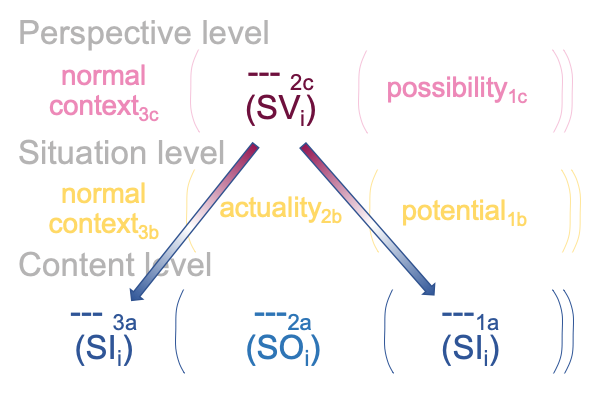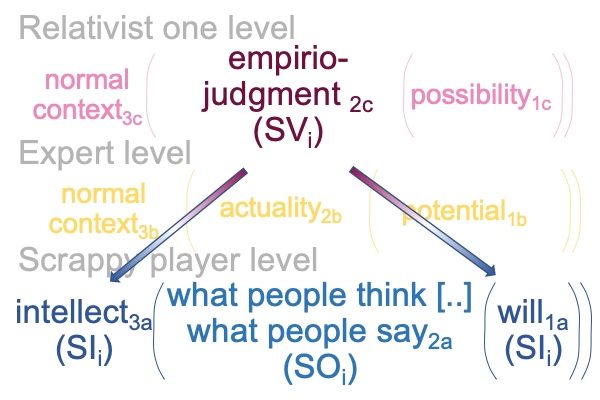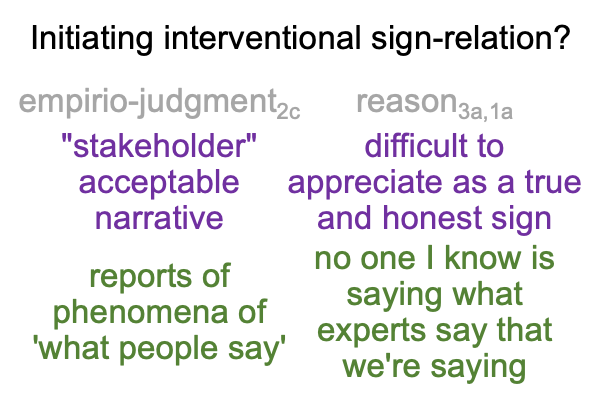0384 In the fourth step, an interventional sign-relation fails to initiate.
Recall, the structure of the interventional sign-relation is counterintuitive.
0385 How does a sign-relation operate?
A sign-vehicle (SV) stands for a sign-object (SO) in regards to a sign-interpretant (SI).
0386 One cannot use only one category-based nested form to depict a sign-relation. Two adjacent levels are required. So, sign-causality involves a SV on one level and a SO on the adjacent higher level.
0387 For example, the specifying sign-vehicle (SVs) is a content-level actuality and its sign-object is a situation-level actuality (SOs). The content-level associates to firstness. The situation-level associates to secondness.
Plus, the exemplar sign-vehicle (SVe) is a situationb-level actuality and its sign-object (SOe) is a perspectivec-level actuality2.
But, the interventional sign-vehicle (SVi) belongs to the perspectivec level. There is no “fourthness”. There is only firstness to return to. That makes the interventional sign-relation most quizzical. The interventional sign-object (SOi) resides in firstness, the category for the content-level.
0388 Here is a general picture for the interventional sign-relation.

0389 Here is the rub.
Unlike the sign-vehicle for the specifying sign, the sign-vehicle for the interventional sign cannot be seen, heard, smelled, tasted or touched. Yet, it2c (SVi) must be present whenever the human psyche asks, “What is happening?”3a, and operates on the potential that ‘something’ could be happening1a (SIi).
Also, the sign-object for the interventional sign (SOi) is something that can be seen, heard, smelled, tasted or touched. In fact, it2a is so apparent that it can be observed and measured as phenomena by psychometric scientists. Yes, it2a is so obvious that it2a is contiguous with the sign-vehicle of the specifying sign relation (SVs). This is the topic of Razie Mah’s blog in December 2023, titled Looking at Daniel Dennett’s Book (2017) “From Bacteria To Bach And Back”.
0390 For the interscope of the post-truth condition, the interventional sign-relation looks like this.

0391 What do I mean when I say that a stakeholder-adjusted empirio-normative judgment2c may fail to initiate an interventional sign-relation?
Well, clearly, the manipulative nature of the empirio-normative judgment2c is a feature, rather than a technical problem to be solved. Success2c, for the scientismist one3c, turns a value-laden opportunity1c into an actionable judgment2c. The judgment associates to the interventional sign-vehicle (SVi). The action2c associates to its reception by the scrappy player’s reason3a,1a (SIi).
So, the failure goes like this. If the empirio-normative judgment2c (SVi) is so distorted by accommodation to stakeholder demands, then content-level reason3a,1a (SIi) may not engage, as shown in the following figure.

